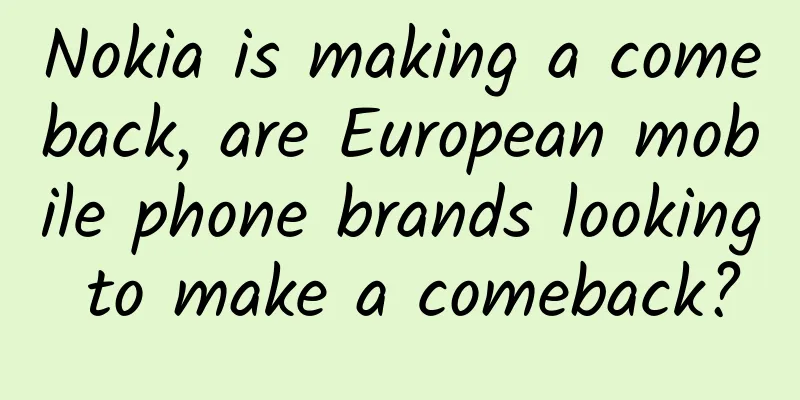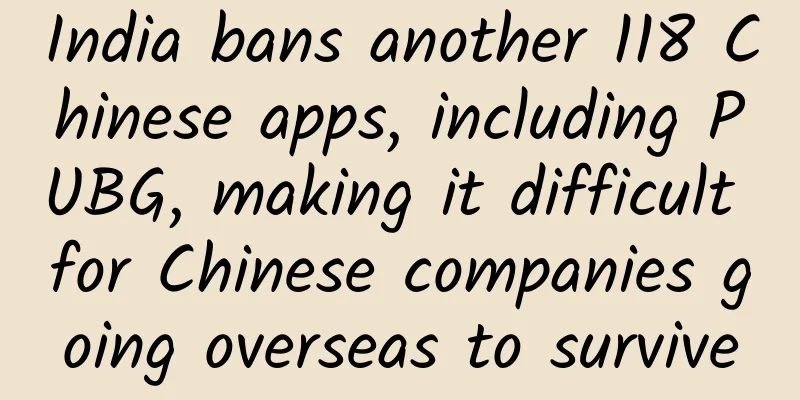Nokia is making a comeback, are European mobile phone brands looking to make a comeback?

|
Recently, a video about European mobile phone brands has become popular on YouTube. The video is a program launched by a foreign self-media company called "The Story Behind", which summarizes the current gameplay of European mobile phone brands. We all know that in the past, Europe could be said to be the leader in the mobile phone industry. For example, the former overlord Nokia, France's Alcatel, Germany's Siemens and Sweden's Ericsson were all well-known mobile phone manufacturers. But since Nokia sold its mobile phone business to Microsoft six years ago, European companies have basically disappeared from the smartphone market.
"The Story Behind" summarizes the current status of mobile phones in Europe and divides the strategies of some mobile phone companies into three main strategies. However, judging from the current customer orientation and technology node situation in the mobile phone industry, the majority of the market is already in the hands of countries represented by China and the United States. No matter what strategy European brands adopt, it is a bit difficult for them to stand out from the pressure from China and the United States. "Regional Champion" Strategy: Covering one's ears and stealing the bell is not a long-term solution According to Behind the Scenes, the "regional champion" strategy is one of the main strategies of European mobile phone players. The main representatives are BQ in Spain and WIKO in "France". France is put in quotation marks because WIKO was wholly acquired by Shenzhen Tianlong Mobile in 2017. However, WIKO's main battlefield is still in France, so we will still regard it as a European brand. Both companies make very standard, low-priced phones, but unlike the others, they focus on just a few markets. That’s why they’re called “regional champions.” "Regional champion" is a simple but effective strategy. Companies like BQ and WIKO have sold millions of devices, and data from the past two years show that they are profitable, better than some global mobile phone brands such as Sony, HTC and LG. Compared with global brands such as Sony and LG, we can find that mobile phone companies that focus on a small number of markets such as BQ and WIKO do have certain advantages. They do not need to establish their own global brands through expensive global marketing channels and customer relationship support, which makes it easier for them to concentrate resources on a small number of markets and achieve results. And they have indeed achieved certain results by doing so. Data shows that from 2014 to the first half of 2018, WIKO has ranked second in the French market for four consecutive years. Even in 2017, when global competition was fierce, its market share was close to Samsung with 17%, making it a household name. In the opinion of Kevin She of Smart Relative Theory, the so-called "regional champion" strategy is nothing more than a cover-up. "Regional champions" cannot become real champions. This brand strategy has several very big disadvantages. First, the minority market strategy will lead to limited brand scale and limited revenue; second, the reason why this strategy can succeed is that there is a lack of direct competitors in its market. Brands such as WIKO and BQ have no advantages in hardware, software or other functions. Their only price advantage will no longer exist when facing brands like Xiaomi from China. This is one of the reasons why Xiaomi has expanded so rapidly in Europe in the past two years. For example, in the Spanish market, BQ was greatly impacted by Xiaomi. As early as 2016 and 2017, BQ's market share in Spain was still in the top three, but in the first quarter of 2018, BQ fell to fifth place and Xiaomi reached third place. By November 2018, Xiaomi had topped the sales list for 8 consecutive months, while BQ had fallen out of the top ten. "Niche product" strategy: In the mobile phone industry, niche products are ultimately unable to defeat the mainstream As the name suggests, the "niche product" strategy is to launch relevant niche products for specific groups of people. Fairphone from the Netherlands and Blloc from Germany are the best examples of this strategy. The trick is that these companies have very unique niche products and currently have no direct competitors. For example, Fairphone made a modular mobile phone. When talking about modular mobile phones, more people may be familiar with Google's Project Ara. What is unexpected is that Project Ara was stillborn, while Fairphone's modular mobile phone was launched in 2014. Modular mobile phones are like Lego. The various modules of the mobile phone can be freely disassembled and installed. The hardware part can also be upgraded and updated more easily, which minimizes the negative impact on the environment and supply chain personnel. In addition to modular processing of mobile phones, its other competitive advantage is its corporate philosophy, just like the name of its mobile phone is "Fair", it does not use "conflict minerals" and ensures that the workers who produce mobile phones are not enslaved and exploited. Fairphone's mobile phone products may make people feel a little outdated. For example, its body material is mainly engineering plastic, and its thickness is basically twice that of current mainstream mobile phones. The overall configuration is also mid-to-low-end, and its price is not as competitive as BQ or WIKO. Its price of 359 euros is equivalent to the price of the most expensive products of BQ or WIKO. Blloc's products are just standard hardware, but it has developed a very unique software, Blloc OS. Blloc OS is a simplified Android system that is fully functional and uses a black, white and gray interface design, making the phone look very boring, allowing users to understand their phone usage habits and avoid addiction. Both companies are extremely innovative in their ideas, but judging by the market sales of their products, neither is doing very well. Fairphone's products have been on the market for several years, but sales performance has not improved much. Blloc's products have just been on the market, and due to factors such as price and user habits, there are buyers but not many. Kevin She of Smart Relative Theory believes that the strategic risk of this type of "niche product" is far greater than that of the "regional champion" strategy. The first is the issue of price. This type of "niche product" has its own unique features, which also leads to an increase in production costs, and the price is correspondingly higher than other mobile phones with the same configuration. It was mentioned before that the price of Blloc359 euros is already comparable to the price of the highest-end mobile phones of brands such as BQ and WIKO, and the price of Fairphone is as high as 530 euros. Although modular mobile phones are easier to disassemble and repair, the price of a single module is also relatively high, and the high price will hit users' purchasing intentions. Second, the niche market is still a niche market after all, and its products cannot become mainstream. In fact, users in the niche market are often more picky than traditional users. For example, after the release of Fairphone's modular mobile phone, many users felt that it had not reached the level of DIY they expected. This caused great trouble for Fairphone. In addition to some early adopters, most of the users who buy modular mobile phones are geek players, but these players have doubts about the "playability" of Fairphone phones. However, if the DIY level of the phone is further enhanced, their market audience will become narrower. Fairphone's biggest problem is that it cannot please both sides. "Nokia" strategy: When the sentiment is gone, Nokia will also become a "bad movie" The third mobile phone brand strategy proposed in "Behind the Story" is the "Nokia" strategy. The so-called "Nokia" strategy cannot be summarized in simple language. This is a strategic approach that belongs to Nokia and only to Nokia. Both the “regional champion” and “niche product” strategies focus on a specific market positioning, either on a certain region or on a certain product. These companies cannot become mainstream brands because, like other European smartphone manufacturers, they have very limited control over their own devices. But Nokia is special. First of all, Nokia has a broad user base and a considerable nostalgic factor. As long as the price is right, many consumers are willing to pay for it. Secondly, major retailers around the world will also buy Nokia's account. As long as they hang the Nokia brand and enter major supermarket platforms, there will be no big problems. Finally, Nokia is favored by investors. Both first-line capital and individual financial giants are willing to invest in Nokia. In addition, Nokia itself is a hot topic. Whenever Nokia phones have new moves, users like to talk about them on major media platforms, which is equivalent to free publicity for Nokia. The Nokia brand is still incredibly valuable, so the Finnish startup behind HMD Nokia has a huge opportunity to turn Nokia into a mainstream global brand again. According to the data, HMD's Nokia sold 8.45 million smartphones worldwide in 2017. HMD also produces Nokia feature phones, selling 13.5 million feature phones in the third quarter and entering the top five in India in the feature phone field in the fourth quarter. In the second quarter of 2018, Nokia was making great strides against the backdrop of a sluggish global mobile phone market. According to the mobile phone shipment report for the second quarter of 2018 released by the statistics agency Counterpoint, Nokia's second quarter growth was as high as 800% year-on-year, accounting for 1% of the smartphone market, and has firmly ranked ninth on the list. In the European market, Nokia has returned to fifth place on the sales list. Of course, Nokia's strategy also has a big risk, that is, "overconsumption". In fact, Nokia's "sentiment" has been almost exhausted so far, and Nokia itself is well aware of this situation, which is why Nokia has been accelerating its pace. For example, Nokia has surpassed brands such as Sony and HTC in most major markets. The achievements in both the European and global markets were achieved within one year. Nokia has established its own production lines in Europe, China, India and other places, which will help Nokia products have more advantages in local market competition. In the past, many people were not optimistic about Nokia's long-term development. The fundamental reason was that in addition to the disappearance of "sentiment", Nokia's products lacked differentiation. "Behind the Story" also believed that even if many people liked their products, they still used other brands of mobile phones. If they did not have differentiated products, then it was questionable how long their growth could last. Kevin She of Smart Relative Theory believes that Nokia’s situation is actually somewhat similar to that of Stephen Chow. Without many special features on the product side, it relies on sentiment to support it. Stephen Chow’s situation may serve as a lesson for Nokia. After the audience has paid off the "movie ticket", the market still needs to speak with strength. According to the latest news, Nokia 9 PureView, which has been rumored for more than half a year, may be officially released at the end of this month. This product should be Nokia's response to market doubts. It is equipped with a rear Zeiss 5 camera and may become HMD's most expensive smartphone. As for whether Nokia can return to its peak and stand at the top of the mobile phone market pyramid again, Smart Relative Theory believes that it is basically unlikely. Whether from the technical end or the market end, Nokia cannot replicate its peak. However, as long as Nokia does not fall behind in the next market change like it did the first time, it still has hope of returning to the first tier thanks to the inherent effect of its brand. summary Looking at the current mobile phone market, it is true that European players have lost their glory. On the software side, American companies control the mainstream operating systems, and on the hardware side, European companies cannot achieve rapid upgrades and updates like Asian countries and regions such as China, Japan, and South Korea. So no matter what strategy European brands are implementing, to be honest, it is difficult to achieve a counterattack at least in the short term. As for whether the situation will change many years later, that is hard to say. |
<<: Is it really humiliating for Microsoft to withdraw from the mobile OS stage?
>>: Don’t throw away your unused iPhone. Use Carplay to build a smart car
Recommend
Why do large education companies operate private domain traffic in QQ groups?
Since WeChat has taken over every aspect of our l...
Is it true that schools in Shanghai will start on April 20? It is understood that this is a rumor!
Is it true that schools in Shanghai will start on...
Analysis of B station product operations!
From a UGC video platform that started out in the...
How many keyword statuses are there in Baidu bidding promotion? What do they represent respectively?
The establishment of a Baidu bidding promotion ac...
The million-dollar Douyin traffic strategy
In the past three years, I have managed the entir...
The latest news on delayed retirement: the plan will be officially implemented in 2022! Attached is a list of retirement ages for those born after 1970!
We know that one important reason for implementin...
The childhood games of the 80s and 90s, which the 00s have never seen
Children are not divided into big or small, we ar...
Get a full refund from VATTI World Cup, and talk about the 5 correct approaches to new media marketing
The World Cup is over, France won the championshi...
How to operate new media? How to write a plan?
How to write a promotion plan for new media opera...
How to get the Taobao Live invitation code? What are the tips for Taobao Live?
This article mainly introduces how to obtain the ...
Does the TV game hall interception of CP bring birth or death?
Searching for "TV game channel revenue shari...
The volcano spewed 80 grams of gold a day. Whose "pie from the sky" is it? Let's go! Let's go to collect the gold
Question of the day: Has the price of gold gone c...
Retention rate? Several classic methods to keep more users!
An APP and its users will go through four stages:...
Unveiling Omicron: Will it be the last coronavirus variant to wreak havoc around the world?
Written by: Zhu Hengheng Editor: Wang Haha Layout...
Teacher Liu's classroom "Pr Quick 3 Hours to Learn Video Editing"
This set of Pr crash course is a teaching video c...









